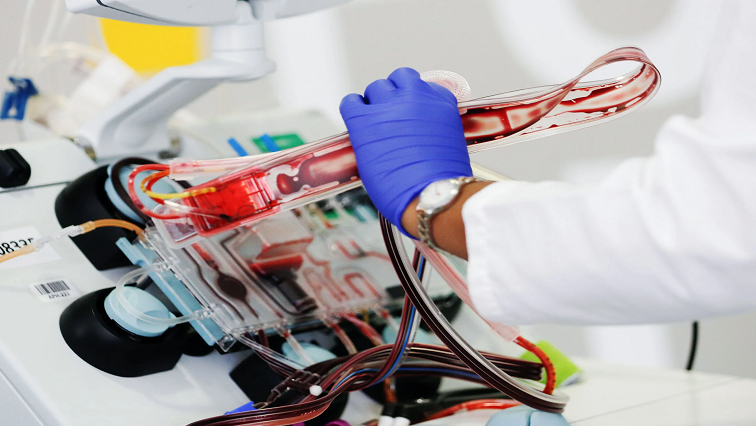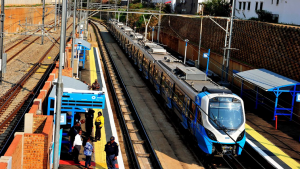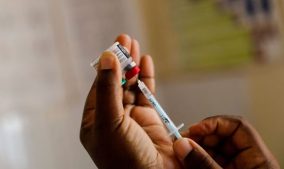The South African National Blood Services (SANBS) is exploring the use of convalescent plasma for the treatment of COVID-19. This as the world races to find a vaccine for the disease.
Convalescent plasma treatment involves taking the antibodies from the blood of a recovered patient and transferring them to a person who is infected with COVID-19.
The SANBS trial is in two phases; the collection of convalescent plasma from donors and a randomised clinical trial.
A team has started the collection phase, but is awaiting ethical clearance to begin the human trials.
If you have recently recovered from COVID-19 and been free from any symptoms for 28 days, you could save a life by donating convalescent plasma. #COVID19 #ConvalescentPlasma pic.twitter.com/tYTkrfQKjy
— The SANBS (@theSANBS) July 8, 2020
The idea of using convalescent plasma as a treatment is not by any means novel. Convalescent means recovering, as Marion Vermeulen, who is the senior manager for operations testing at SANBS, explains: “When a person becomes infected with a virus or a bacteria or any kind of pathogen, their immune system starts to make antibodies to fight that virus so that they themselves can get better.
“So, those antibodies remain in your plasma, the clear liquid part of the blood, and depending on the virus, they can last for many months. So, after the person has recovered from the virus, they can donate their plasma, which now contain these antibodies, and those antibodies can now be transfused into a person who is currently ill with that same virus. And the idea is that the neutralising antibodies that are in that plasma will fight the virus in the patient’s body while the patient is trying to develop their own antibodies,” Vermeulen adds.
The hypothesis is that the virus will not be able to replicate as fast as it normally would and the patient would hopefully be able to recover sooner and have milder symptoms of the disease.
Vermeulen says convalescent plasma therapy has been used in the past to treat other respiratory virus infections.
“For COVID-19, it has not proven to be effective yet. That is why we are doing these trials. In the past though, it was very effective for the Spanish flu in 1918. More recently, for Sars-1, there were a number of randomised clinical trials that showed the effectiveness of the treatment. And again for Mers, not as many randomised trials, but still there were randomised clinical trials that showed it to be effective. Sars-cov and Mers are both coronaviruses and both respiratory viruses.”
A number of scientists around the world have been exploring the use of convalescent plasma as a possible treatment for COVID-19. However, Vermeulen says the studies have not been conclusive due to various factors.
“There’ve been some case reports in China, and again these are not randomised clinical trials and the only way to determine if it really works is through a random clinic trial. But the case reports that were published from China show patients did well. And there has been another randomised clinical trial that was stopped early that has just come out of China, where they showed some improvement in some of the outcomes, but they were not able to show statistical significance and it’s because it was stopped too soon. They didn’t have a sufficient sample size.”
She says in addition to the Chinese tests, some countries have also looked into observational studies.
“And there has been what has been called observational studies where a number of people were given the plasma and they looked to find patients who were similar to that group who didn’t get the plasma. So they would match them for age, and gender and comorbidities and severity of the disease, and look to see well this person got the plasma, this person didn’t get the plasma and what were the differences. In some of those observational studies, they have shown that there has been an improvement in disease. So with that information, we are hoping that it will work, but it can only be tested with the clinical trial and then we will know for sure.”
Vermuelen has emphasised that the only means to obtain conclusive data is through randomised clinical trials.
“So, there are many randomised clinical trials happening at the moment in the world, but none of them yet have got to the end where they have got the data. There is a number in the UK, in Europe and in America that are taking place as we speak. So, as soon as we have results, and it can be shown that it is effective, then we will not do the randomised clinical trial anymore. We will use it as a treatment. But in the absence of any data yet proving that it works, we only give it in the randomised clinical trial.”
The SANBS studies are in two phases. The first entails collecting, storing and testing the convalescent plasma. This phase has been given ethical clearance and has already begun. However, Vermeulen says the second phase will only begin once the Human Research Ethics committee has given them the green light.
“The second protocol is the randomised clinical trial. It is a placebo-controlled phase three clinical trial. That protocol is at the moment with the Human Research Ethics committee for approval. And next week we will be submitting it to SAPRA for approval. And only once it has been approved will we start that study.”
Vermeulen says after being given the go-ahead, a sample of 600 patients will be enrolled in the trial.
“The eligibility criteria will be patients who have been hospitalised and have moderate to severe illness and are not mechanically ventilated. And then they will either get the treatment, one dose of convalescent plasma, which is about 200 to 250mls of convalescent plasma, or they will get a placebo which is a saline. They will be followed over 28 days and a number of primary outcomes will be looked at. The obvious one is reduced mortality, admission to ICU, discharge from hospital, viral load and antibody levels.”
While the ethics committee reviews the second phase of the study, those wanting to donate their convalescent plasma can apply via the SANBS website. If the trial is successful, this will add another weapon to the arsenal that can be used in the fight against COVID-19.






